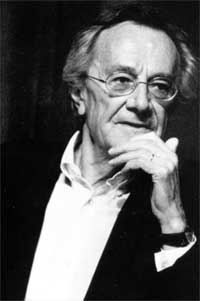“Jumping into the Void” by Juan Antonio Molina |
chapter I | chapter II | chapter III | chapter IV
IV
If we are to accept the chief role of the image in the construction of the historical account, we also have to accept the relativity of the historical account. And we must also accept that there is a dialectic relationship between the need of believing in the image and its lack of credibility.
For example, there is a proliferation of Web pages that question the verity of the official information regarding 9/11. These Web pages offer a resistance to the almost obsessive manner in which people have been involved, not from the standpoint of History but from a story constructed by the media. And the media itself are untrustworthy. The distrust is part of the identity of the medium. This provokes that the official versions do not seem more believable than those versions looking to undermine their credibility.
If it still seems necessary to discuss the credibility of the media is because we still believe in them. If it is still necessary to debate about the lack of reliability of photography is because we still think that we still believe in it, because it remains to be efficient. It is efficient even if we do not believe in it, since its ability to persuade is beyond its untrustworthiness. At any rate, this maintains the debate of reality versus fantasy, History versus fiction, or History versus image.
 |
Jean François Lyotard states in his essay Post Modernism explained to Children, states that Post Modernism in terms of annihilation of meta-accounts regarding the historical accounts and the progressive mission of History (the paradigm of the illustrated man, the paradigm of techno-science or the moral paradigm of Judeo-Christian roots.)1 He points out that one of the moments marking the annihilation of these meta-accounts in the so-called “Holocaust” of WW II. For him, this is the moment that should have favored the vindication of modern man.
|
It is possible that the events of 9/11do not have the real impact or even the symbolic magnitude of the concentration camps of WW II. There is no comparison, not even in terms of spectacle, between the televised images of 9/11 and the publication of the images of the Nazi camps. However, it is very probable that the capacity for visual impact was superior in 2001 than in 1945. Therefore, the efficiency of the rhetorical mechanism of these images is easier to confirm. Finally, it is quite possible that there is a kind of substitution mechanism that puts the impact of an event that is currently represented, reproduced and broadcasted above the impact of 60-year old occurrence.
In any case the events of 9/11 explicitly evidence how those paradigms are being substituted by other accounts, which are constructed, distributed and supported from, and by the mass media.
The media treatment of iconography is an example of the repercussions and re-elaboration of the crisis and meta-accounts of Modernity. It shows the way in which these accounts are used, taken and recycled by the mass media. This also forces us to understand Post Modernity as a moment full of residues, a moment filled with the debris of Modernity. And this debris that remain in the world of the arts, are recycled, reabsorbed and reassessed in the mass culture. That is also part of the effectiveness of the mass media.
If a lot of the people that was watching CNN or BBC on 9/11thought they were watching a Hollywood film, is because this effectiveness of the media is based on the confusion between reality and fiction, called the “space of hyperreal” by Baudrillard which showed all of its capacity to convince and confuse. The space of the hyperreal is, in the end, the space where imagination precedes history and reality. In consequence, skepticism is no longer as directed towards image as it is to reality. We arrive to the certainty that the media tampers all of our experiences of reality. It is a lot less stressful to distrust reality than to distrust the image. In conclusion, to distrust all the metaphysics that historically had surrounded our experience of reality.
1. See Jean-Francois Lyotard. La postmodernidad (explicada a los niños). Barcelona, Gedisa, 1987
Juan
Antonio Molina
juanmolinac@prodigy.net.mx